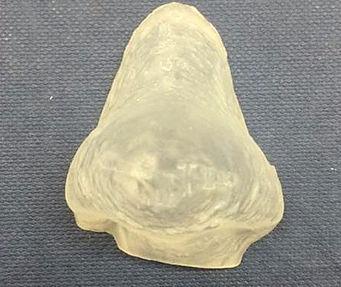 As epilepsy medication in the form of the 3D printed SPRITAM pill was approved last year and made available commercially this year, many may have expected a wild array of similar items to hit the market almost immediately, but along with intense research and development, jumping through all the hoops of getting new pharmaceuticals approved is certainly a herculean task at best.
As epilepsy medication in the form of the 3D printed SPRITAM pill was approved last year and made available commercially this year, many may have expected a wild array of similar items to hit the market almost immediately, but along with intense research and development, jumping through all the hoops of getting new pharmaceuticals approved is certainly a herculean task at best.
And since you might not know anyone with access to SPRITAM, it may seem as though this 3D printing of pills is a passing fancy—with SPRITAM as a one-off. The future most likely will show that not to be true at all though, and if the continued work going on between the University College London School of Pharmacy and FabRx Ltd. is any indication, many exciting innovations are to come that will really help patients—as well as those suffering from embarrassing and troubling conditions like acne.
Last time we checked in, the researchers were using SLA 3D printing , examining the potential for varying forms of modified-release dosage in the paper ‘Stereolithographic (SLA) 3D printing of oral modified-release dosage forms.’ The objective was to see if it was possible to make such pills effectively. Concluding that it was, thanks to the abilities of the SLA 3D printer, the scientists have now moved on to attacking acne, a blight which has probably stricken most of us at one time or another, generally causing angst even it’s just one offending fat zit, not to mention a serious case.
While the previous subject explored the idea of using 3D printing to control physical conditions and relieve suffering via oral ingestion and relief, now the researchers, Alvaro Goyanes, Usanee Det-Amornrat, Jie Wang, Abdul W. Basit, and Simon Gaisford, are exploring topical relief achieved with 3D scanning and 3D printing techniques used to make drug loaded devices—in this case, for the elimination of acne with salicylic acid. They released the results of their study in a paper, ‘3D scanning and 3D printing as innovative technologies for fabricating personalized topical drug delivery systems,’ recently published in the Journal of Controlled Release.
Again deeming SLA to be superior, as in their last study, the team pitted FDM and SLA technologies against one another, MakerBot Replicator 2X versus the Form 1+ SLA 3D printer, showing SLA to offer higher resolution and higher drug loading overall, with no degradation of the medicine. Drug diffusion was also found to be much faster.
“The results of drug diffusion tests revealed that drug diffusion was faster than with the FDM devices, 229 and 291 μg/cm within 3 h for the two formulations evaluated,” stated the researchers. “In this study, SLA printing was the more appropriate 3D printing technology to manufacture anti-acne devices with salicylic acid.”
“The in vitro results of drug permeation tests showed drug diffusion from all the 3D printed devices.”
Along with designating the winner in terms of their second FDM v. SLA competition there in the lab, the researchers also showed that it is possible to make these drug loading devices through scanning the patient’s image and then 3D printing a type of mask to help stop acne, for instance. By scanning a patient’s nose using a Sense 3D Scanner from 3D Systems, the scientists were able to 3D print a customized drug loading device for topical application.
Today, many of us just run to the drugstore and buy a cream or talk to our dermatologist about a prescription when plagued by acne. Some, however, have severe cases and are extremely embarrassed and self-conscious, often not wanting to attend social events. The benefits with the technology these researchers are perfecting are in offering an effective treatment with the proper medication being loaded into an isolated area and using an anti-acne mask that fits perfectly thanks to personalized scanning. Speed and affordability are substantial benefits, as well as allowing for a future when doctors can print something like these anti-acne masks in the office as part of concluding an office visit and sending the patient off with the proper treatment immediately. This is just another example of 3D printing technology’s potential to make an impact regarding a troublesome condition, offering greater effectiveness, quality in product, and affordability.
What do you think about the researcher’s dedication to SLA over FDM–and would you be interested in using one of these masks as opposed to traditional treatments? Let’s talk about it more over in the 3D Printed Anti-Acne Masks forum at 3DPB.com.
Subscribe to Our Email Newsletter
Stay up-to-date on all the latest news from the 3D printing industry and receive information and offers from third party vendors.
You May Also Like
3D Printing Financials: Fathom Struggles in Financial Quicksand During Critical Transition
Facing a year of key transitions and financial pressures, Fathom (Nasdaq: FTHM) has filed its annual report for 2023 with the U.S. Securities and Exchange Commission (SEC). The document outlines...
Latest Earnings Overview for Australian 3D Printing Firms Titomic and AML3D
Australian 3D printing manufacturing firms Titomic (ASX: TTT) and AML3D (ASX: AL3) reported their financial results for the period from July to December 2023, marking the first half of their...
3D Printing Webinar and Event Roundup: April 7, 2024
Webinars and events in the 3D printing industry are picking back up this week! Sea-Air-Space is coming to Maryland, and SAE International is sponsoring a 3D Systems webinar about 3D...
3D Printing Financials: Unpacking Farsoon and BLT’s 2023 Performance
In the Chinese 3D printing industry, two companies, Farsoon (SHA: 688433) and Bright Laser Technologies, or BLT (SHA: 688333), have recently unveiled their full-year earnings for 2023. Farsoon reported increases...


































